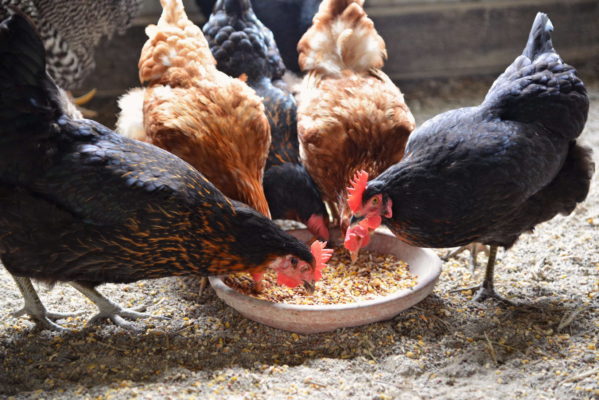
Shielding the future for poultry farmers in Gujarat
Published on 27/07/2023

United Soybean Board via Flickr (CC BY 2.0)
Biosecurity plays a critical role in maintaining the health and productivity of poultry farms. With the increasing risks associated with disease outbreaks and the potential for economic losses, it is imperative to equip the necessary knowledge and skills to implement effective biosecurity measures.
From my experiences with the One Health Poultry Hub’s research in Gujarat, undertaking key informant interviews, link tracing studies and biological sampling surveys, it has become clear that there are different levels of biosecurity measures followed between and within the existing poultry production and distribution network in Gujarat.
Out of the existing poultry production and network system, it has been observed that breeder farms observe almost all biosecurity measures, followed by commercial layer and broiler farms, with the least biosecurity measures observed in the case of the small-scale poultry and backyard poultry. Biosecurity levels depend on farm selection (‘conceptual biosecurity’), farm construction (‘structural biosecurity’) and practices to prevent disease outbreaks (‘operational biosecurity’).
Biosecurity unquestionably safeguards birds from diseases, curtails disease transmission, enhances bird wellbeing and minimises mortality rates, ultimately fostering a more lucrative and healthier poultry enterprise. Moreover, it plays a crucial role in safeguarding human health, making it an indispensable aspect of the One Health approach.
Tailored training
For these reasons, it was decided that through a series of tailored training sessions we could empower local commercial farmers, farm supervisors, trainees at the Poultry Training Centre, Anand, and backyard farmers with the knowledge and skills to implement effective biosecurity practices. With support from the Hub’s training committee in designing course themes and developing courses we went ahead, with team members designing pre- and post-training questionnaires, organising data collection and storage, and providing invaluable support for what turned out to be very effective and successful training sessions.

We held five training programmes on biosecurity in poultry farming, welcoming 156 participants: 47 commercial layer farmers, 39 commercial broiler farmers, 28 backyard poultry farmers, 33 line supervisors and nine trainees from the Poultry Training Centre. Out of the total, only two were female reflecting gender equity concerns in the poultry business.
The post-training follow-up showed that around 30% of the participating farmers had improved their scores, reflecting the impact of the training.
Participants were guided through the fundamentals of biosecurity covering the following areas:
- Basic principles
- Disease prevention
- Cleaning and disinfection of premises
- Disease resistance in birds
- Reducing the use of antibiotics.
- Biosecurity protocols
- Risk assessment
The training was designed to helped poultry farmers understand the risks associated with disease transmission and how to implement effective preventive measures. By following biosecurity protocols, they can reduce the chances of diseases entering the farm and minimise the risk of disease spread within the flock and to others.
Foodborne illness
When birds are not plagued by diseases, they are more likely to reach their genetic potential for growth and egg production. Biosecurity measures not only protect the birds but also help ensure the safety of poultry products for consumers. By reducing the risk of diseases in the flock, the chances of foodborne illnesses related to contaminated poultry products are minimised.
In the training, participants were informed that investing in biosecurity training may require resources initially, but it can save money in the long run. Preventing disease outbreaks avoids the need for costly treatments, medications and potential flock culling. Poultry operations that prioritise biosecurity and adhere to best practices gain a positive reputation in the industry and among consumers. This can lead to increased trust and demand for their products.
Participants also learned that some poultry diseases can have environmental impacts as well. They were given information on how they could reduce the use of antibiotics and play an important role in One Health as part of wider efforts to tackle antimicrobial resistance (AMR).
In India, there are poultry biosecurity_regulations and guidelines that poultry farmers must follow. Training helps them understand and comply with these requirements. The World Organisation for Animal Health has also published health standards in this area.
Initial screening of the feedback on our training suggests that it was effective. I am sure this capacity building will be useful for maintaining the health and sustainability of the poultry farming industry in Gujarat. However, the data analysis element of our work will help with the emergence of the exciting story.


